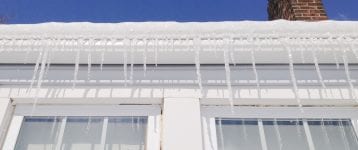Drainage systems are more than just holes in the soil. Trench and French styles are two effective approaches to move water offsite, but the difference between them is often misunderstood.
The confusion between trench and French drains is understandable for anyone outside the industry. The terms rhyme, they both involve trenches, and French drains aren’t really French. The defining difference is very simple, however: Trench drains are surface structures while French drains are subsurface ones. Let’s look at how they both work to keep water flowing offsite.
How trench drains operate
Trench drains are also referred to as channel drains and are classified as an above-ground drainage method even though the actual materials are embedded into the ground. This drainage method involves digging a long, narrow trench and finishing it with a grated covering, giving the impression of a large piece of guttering in the ground.
Just like a gutter, trench drains redirect water away from areas where it could cause harm by presenting slip/fall dangers, causing surface erosion of the soil, or presenting other dangers. Once dug and laid, the trench drain must be connected to a local storm sewer or environmentally responsible waterway to direct water away from the site without damaging the ecosystem.
The surface area surrounding the drain must be neat and clear of all obstructions to allow the free flow of water through the grate. Trench drains can be applied at a gentle slope to aid with runoff and sometimes work with a sump pump to drain low-lying areas more effectively.
This kind of drainage can be installed temporarily or permanently with grate strengths varying in load-bearing capability. This kind of drain is exposed on the surface, so it may have to handle some serious weights. The lightest grating examples — Load Class A by ANSI standards — handle foot traffic, on up the scale to Extra Heavy Duty and Special Duty strengths — Load Classes E and F — which can handle passing loads of up to 10,000 pounds.
Trench drain materials range from plastics like polypropylene to concrete, while the grating which covers them can be plastic or steel. If a trench drain will be a permanent fixture, home or business owners can tailor the grating color to better suit its surroundings.
Explaining French drains
French drains are actually an American innovation, invented in the 19th century by a New England farmer named Henry Flagg French. He was the author of “Farm Drainage,” a book published in 1859 and widely considered to be the root of the entire science of drainage.
French drains are subsurface solutions consisting of a trench filled with gravel and a slotted or perforated pipe. A layer of protective, permeable fabric is placed along the bottom and sides of the trench after it has been dug to prevent soil and root intrusion and on top before the topsoil is replaced. Just like a trench drain, French drains siphon water downhill from a site, only this time that includes groundwater as well as surface water.
The gravel in a French drain can vary in size and acts as a sieve by straining out pieces of debris from the water as it passes through. Since these drains are sunk more deeply into the soil, they help draw out any water from the surrounding earth that could cause erosion, structural instability, or both.
French drains have toughness in common with trench drains since the French type must handle groundwater that’s subject to hydrostatic pressure (the pressure water exerts due to the force of gravity). French drains are very effective at redirecting water away from structures and preventing damage to the foundation. Their dimensions are site-dependent, but French drains are typically around a foot wide and can range in depth from inches to a couple of feet.
Let Mikula Contracting solve your drainage problems
Trench and French drains have one other very important thing in common: onsite responsibility. The first step to digging any trench is to research the lay of the land on factors like soil quality, utility line placement, and what permits are required at the local and/or state level. Any dig that starts without due diligence places the construction team, their clients, and the surrounding area at unnecessary risk.
The Mikula Contracting team has more than 70 years of experience in taking care of drainage jobs without shirking our community responsibilities. Trench or French, commercial or residential, we’re fully qualified and insured to create the solution your site requires. Water problems come in different forms — including stormwater, lawn water, and street water — but Mikula can solve them all.
We design and build the trench system that suits you to provide everything from surface, ground, and land drainage to rainwater drainage, standing water drainage, and seepage pits. We’ll talk you through the entire process and provide an honest, transparent quote. Connect with us at the link below and ditch all your drainage worries.
Mikula Contracting, Inc. provides commercial and residential customers with a wide range of excavation, demolition, environmental, snow removal, trucking, and soil materials services. For more information, call 973-772-1684 or email info@mikulainc.com



